The modern age of hemophilia care began in the 1970s with the availability of factor replacement concentrates and continues to evolve to this day.1 Hemophilia, a bleeding disorder with a history of persistent treatment burden, is characterized by deficiencies in specific clotting factors that prevent blood from clotting naturally (hemostasis).1-3 Normal clotting is impeded in hemophilia because the genes that encode for the necessary clotting factor VIII or factor IX contain mutations that result in deficient or nonfunctioning factor proteins.2,4,5
For people living with severe or moderate hemophilia, bleeding can occur spontaneously or from an injury. If left untreated, internal bleeding into organs may affect a patient's life expectancy.5,7,8 Today, the landscape of treatment continues to evolve with innovations designed to reduce treatment burden, addressing the needs of patients throughout their treatment journey.5
Current access to prophylaxis and comprehensive care have made life expectancy for patients with hemophilia close to that of the general population.3,9 As patients are living longer and treatment goals have grown more ambitious, the standard of care has continued to evolve.7 Today’s patients seek the freedom to participate fully in daily living activities with a reduced treatment burden.9
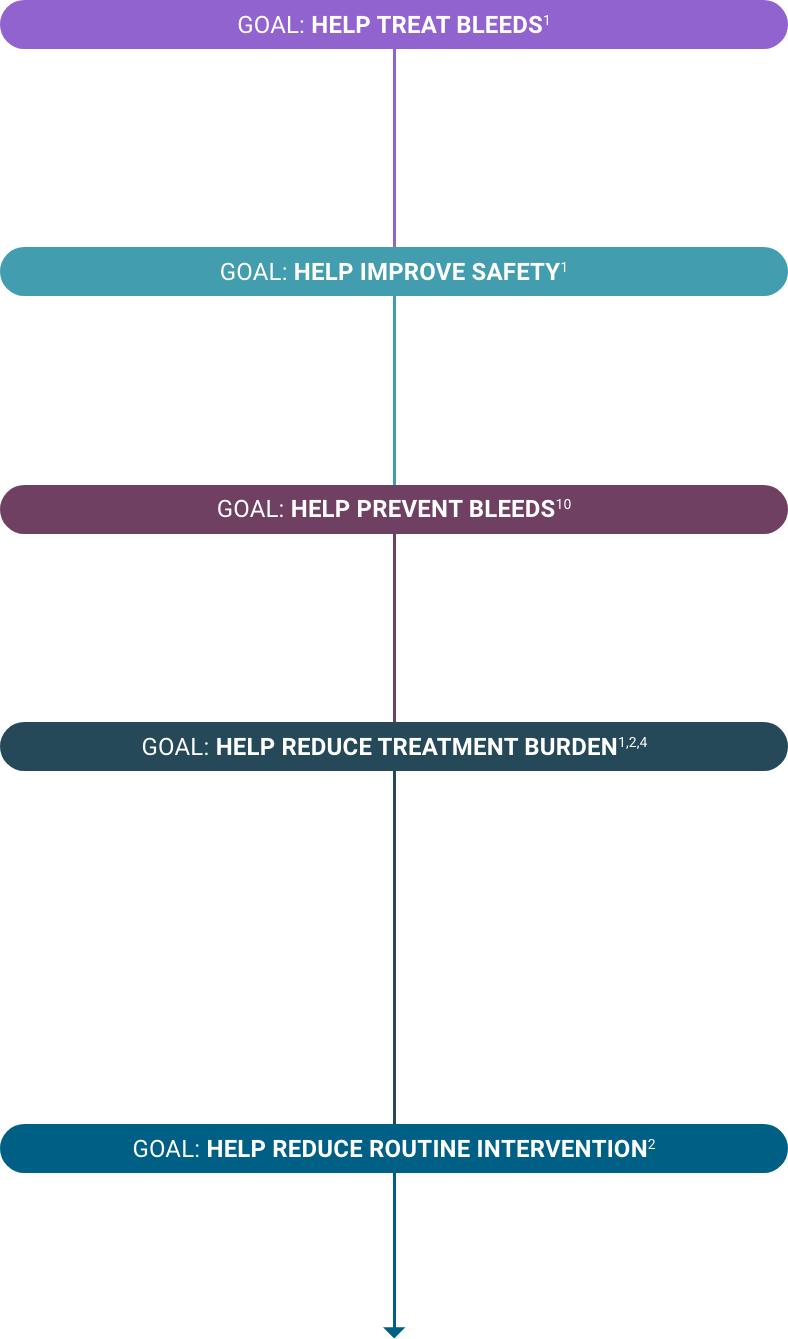

Treatment limitations and patient burden persist despite the availability of current standard-of-care options.11
Bleeds, joint disease, and mobility problems still occur in patients with hemophilia12,13
Joint damage can occur despite prophylaxis, indicating that patients undergoing prophylactic therapy may still experience clinical and subclinical bleeding7,12
The development of inhibitors continues to complicate management and limit treatment options11,13,14
IV access issues, injection site reactions, weight-based dosing, treatment preparation, and the timing and frequency of injections can all contribute to the burdens for patients and caregivers2,11,15-17
The limits posed by current standard-of-care therapies have led to the development of new treatment approaches that focus on different targets and alternative modes of delivery.
Emerging approaches may offer improved pharmacokinetics with simpler dosing administration, which in turn may help reduce treatment burden.2 Emerging treatment modalities have the potential to impact mode and frequency of administration, risk and management of inhibitors, and therapeutic monitoring, all key aspects of hemophilia care.7,13,15
The search for new therapeutic targets begins with the body’s coagulation cascade, the complex process of blood vessel clot formation following injury.18 The coagulation cascade maintains hemostasis by providing a balance between procoagulants and anticoagulants, thus preventing too much anticoagulation (risk of bleeding) and too little anticoagulation (risk of thrombosis). Traditional treatments focus on infusions to replace missing clotting factors.19 However, there are additional sites in the coagulation cascade where innovative therapeutic interventions have the potential to promote hemostasis.15
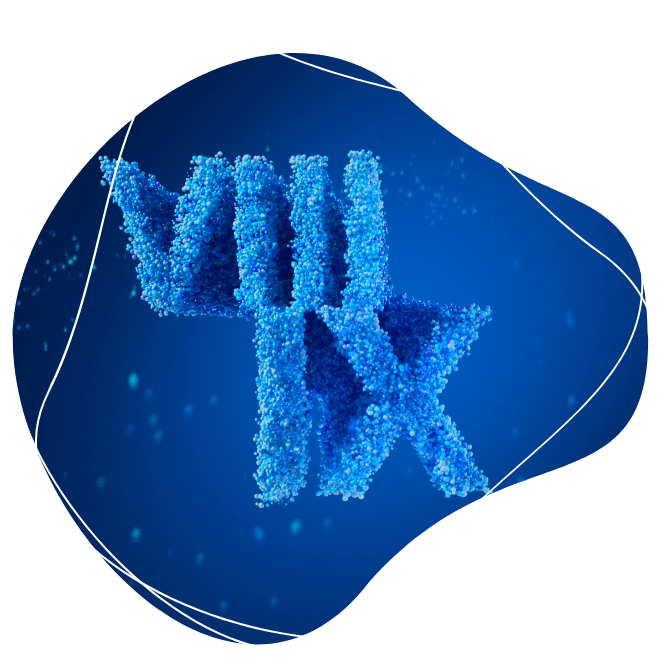

Innovative approaches include gene therapy, a potential one-time infusion that introduces a functional gene that provides for production of factor VIII or factor IX, and inhibition of TFPI, antithrombin, or activated protein complex (APC), all rebalancing approaches that target anticoagulant components within the cascade.1,20,21
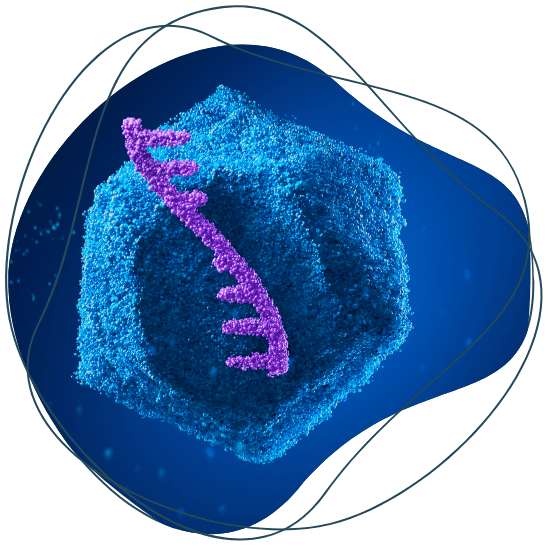
Gene therapy introduces a functional gene into living tissue, providing cells with the ability to produce a missing or nonfunctional protein.23
Gene therapy for hemophilia involves the use of a viral vector to deliver the gene to liver cells.20 Liver cells are targeted because they are responsible for synthesis of factor VIII and factor IX.23
Because both hemophilia A and B are each caused by a variation in a single gene, gene therapy holds the potential to directly address the pathophysiologic basis and may allow the body to produce the missing factor.11,24 Gene therapy aims to meet key unmet goals of achieving steady-state clotting factor levels after a one-time infusion, which may offer long-term bleed protection.25 This liver-directed gene therapy is being studied for its potential for sustained therapeutic benefit, although it is not yet clear how long the effects of gene therapy may last.11
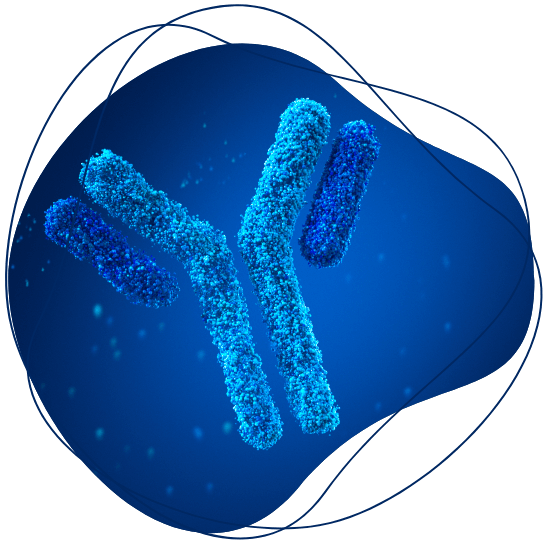
TFPI, short for tissue factor pathway inhibitor, is an anticoagulant protein and a core component of the coagulation cascade.2,19 TFPI naturally limits coagulation activity at multiple stages of the coagulation cascade. In patients with normal clotting ability, clotting factor VIII and factor IX, both procoagulation elements, balance the process and enable the clot to be formed.1
An agent that inhibits TFPI has the potential to block TFPI’s normal anticoagulation properties.2
TFPI inhibition offers the potential to achieve clotting even when factor VIII or factor IX is absent or deficient.2
This mechanism may address certain unmet needs and is being explored across hemophilia A and B and regardless of a patient’s inhibitor status.1,2,15
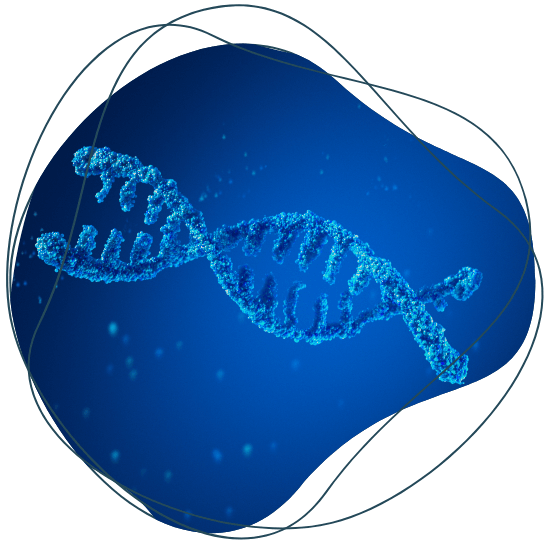
Antithrombin is a natural anticoagulant and the primary inhibitor of thrombin. Thrombin is an enzyme needed to produce fibrin in the final stages of clot formation.1,12,19
An agent that reduces antithrombin production has the potential to promote sufficient thrombin production to rebalance the process and may allow a clot to form when factor VIII or factor IX is absent or deficient.1,2
This mechanism may address certain unmet needs and is being explored across hemophilia A and B and regardless of a patient’s inhibitor status.2,15
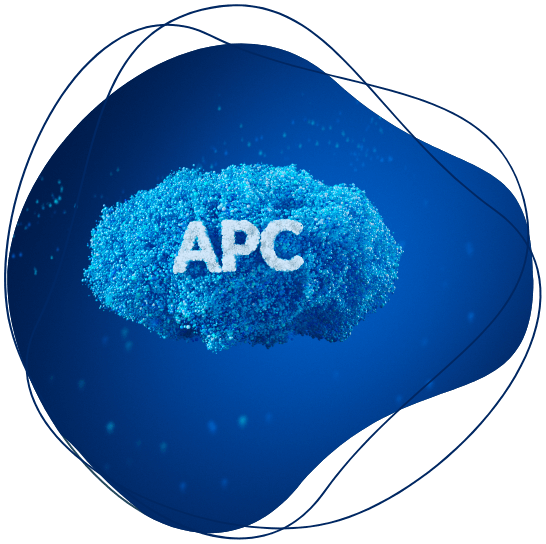
Activated protein C (APC) is a natural trypsin-like serine protease, which has anticoagulant properties. APC directly inhibits activated factor V and factor VIII complexes leading to indirect inhibition of thrombin generation.21
Serine proteases have natural inhibitors called serpins (serine protease inhibitors). Exploration of serpins specific to APC presents an opportunity to restore hemostasis.21,26,27
When factor VIII or factor IX is absent or deficient, an agent that inhibits APC activity may allow for sufficient thrombin generation to rebalance the coagulation cascade and allow a clot to form.21,26
This mechanism may address certain unmet needs and is being explored across hemophilia A and B and regardless of a patient’s inhibitor status.1,15,21

Currently, we're working to unlock the potential of new research for patients living with hemophilia A and B worldwide.
REFERENCES: 1. Ellsworth P, Ma A. Factor-mimetic and rebalancing therapies in hemophilia A and B: the end of factor concentrates? Hematology Am Soc Hematol Educ Program. 2021;2021(1):219-225. doi:10.1182/hematology.2021000253 2. Ozelo MC, Yamaguti-Hayakawa GG. Impact of novel hemophilia therapies around the world. Res Pract Thromb Haemost. 2022;6(3):e12695. doi:10.1002/rth2.12695 3. Chowdary P. Inhibition of tissue factor pathway inhibitor (TFPI) as a treatment for haemophilia: rationale with focus on concizumab. Drugs. 2018;78(9):881-890. doi:10.1007/s40265-018-0922-6 4. Marchesini E, Morfini M, Valentino L. Recent advances in the treatment of hemophilia: a review. Biologics. 2021;15:221-235. doi:10.2147/BTT.S252580 5. Chowdary P. Anti-tissue factor pathway inhibitor (TFPI) therapy: a novel approach to the treatment of haemophilia. Int J Hematol. 2020;111(1):42-50. doi:10.1007/s12185-018-2548-6 6. Soucie JM, Miller CH, Dupervil B, Le B, Buckner TW. Occurrence rates of haemophilia among males in the United States based on surveillance conducted in specialized haemophilia treatment centres. Haemophilia. 2020;26(3):487-493. doi:10.1111/hae.13998 7. Srivastava A, Santagostino E, Dougall A, et al. WFH Guidelines for the Management of Hemophilia panelists and co-authors. WFH guidelines for the management of hemophilia, 3rd edition. Haemophilia. 2020;26 (suppl 6):1-158. doi:10.1111/hae.14046 8. Castaman G, Matino D. Hemophilia A and B: molecular and clinical similarities and differences. Haematologica. 2019;104(9):1702-1709. doi:10.3324/haematol.2019.221093 9. Skinner MW, Nugent D, Wilton P, et al. Achieving the unimaginable: health equity in haemophilia. Haemophilia. 2020;26(1):17-24. doi:10.1111/hae.13862 10. Manco-Johnson MJ, Abshire TC, Shapiro AD, et al. Prophylaxis versus episodic treatment to prevent joint disease in boys with severe hemophilia. N Engl J Med. 2007;357(6):535-544. doi:10.1056/NEJMoa067659 11. Lheriteau E, Davidoff AM, Nathwani AC. Haemophilia gene therapy: progress and challenges. Blood Rev. 2015;29(5):321-328. doi:10.1016/j.blre.2015.03.002 12. Kizilocak H, Young G. Diagnosis and treatment of hemophilia. Clin Adv Hematol Oncol. 2019;17(6):344-351. 13. Miesbach W, O’Mahony B, Key NS, Makris M. How to discuss gene therapy for haemophilia? A patient and physician perspective. Haemophilia. 2019;25(4):545-557. doi:10.1111/hae.13769 14. Peters R, Harris T. Advances and innovations in haemophilia treatment. Nat Rev Drug Discov. 2018;17(7):493-508. doi:10.1038/nrd.2018.70 15. Weyand AC, Pipe SW. New therapies for hemophilia. Blood. 2019;133(5):389-398. doi:10.1182/blood-2018-08-872291 16. Raval P. Thrombophlebitis, In: Enna SJ, Bylund DB, eds. xPharm: The Comprehensive Pharmacology Reference, Elsevier; 2007:1-5. doi:10.1016/B978-008055232-3.60790-1 17. Hemlibra [package insert]. South San Francisco, CA: Genentech, Inc.;2022. 18. Smith SA, Travers RJ, Morrissey JH. How it all starts: initiation of the clotting cascade. Crit Rev Biochem Mol Biol. 2015;50(4):326-336. doi:10.3109/10409238.2015.1050550 19. Negrier C, Shima M, Hoffman M. The central role of thrombin in bleeding disorders. Blood Rev. 2019;38:100582. doi:10.1016/j.blre.2019.05.006 20. Pipe SW. Delivering on the promise of gene therapy for haemophilia. Haemophilia. 2021;27 (suppl 3):114-121. doi:10.1111/hae.14027 21. Zhao X-Y, Wilmen A, Wang D, et al. Targeted inhibition of activated protein C by a non-active-site inhibitory antibody to treat hemophilia. Nat Commun. 2020;11(1):2992. doi:10.1038/s41467-020-16720-9 22. Kumar SR, Markusic DM, Biswas M, High KA, Herzog RW. Clinical development of gene therapy: results and lessons from recent successes. Mol Ther Methods Clin Dev. 2016;3:16034. doi:10.1038/mtm.2016.34 23. Lisowski L, Staber JM, Wright JF, Valentino LA. The intersection of vector biology, gene therapy, and hemophilia. Res Pract Thromb Haemost. 2021;5(6):e12586. doi:10.1002/rth2.12586 24. Petrich J, Marchese D, Jenkins C, Storey M, Blind J. Gene replacement therapy: a primer for the health-system pharmacist. J Pharm Pract. 2020;33(6):846-855. doi:10.1177/0897190019854962 25. Miesbach W, Chowdary P, Coppens M, et al. Delivery of AAV-based gene therapy through haemophilia centres—a need for re-evaluation of infrastructure and comprehensive care: a joint publication of EAHAD and EHC. Haemophilia. 2021;27(6):967-973. doi:10.1111/hae.14420 26. Polderdijk SGI, Baglin TP, Huntington JA. Targeting activated protein C to treat hemophilia. Curr Opin Hematol. 2017;24(5):446-452. doi:10.1097/MOH.0000000000000364 27. Aymonnier K, Kawecki C, Arocas V, Boulaftali Y, Bouton MC. Serpins, new therapeutic targets for hemophilia. Thromb Haemost. 2021;121(3):261-269. doi:10.1055/s-0040-1716751